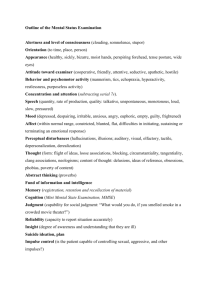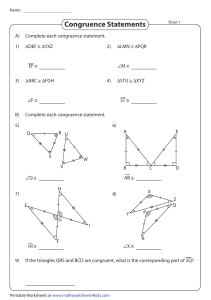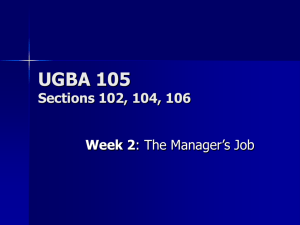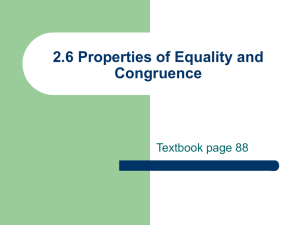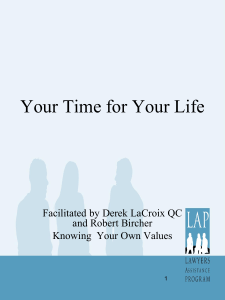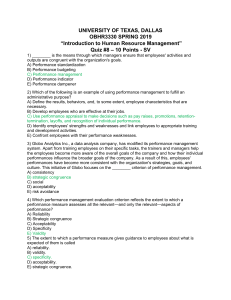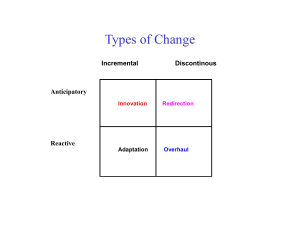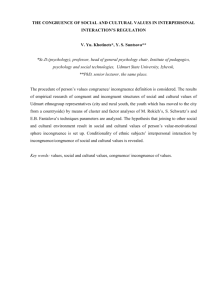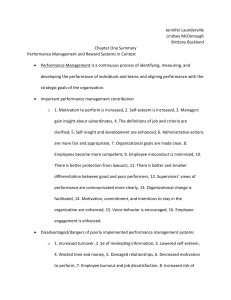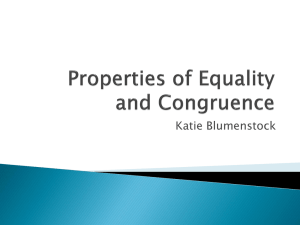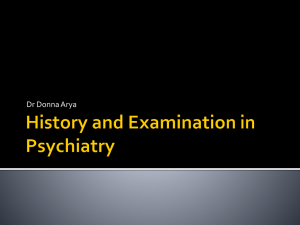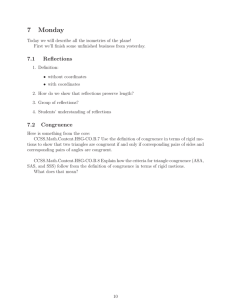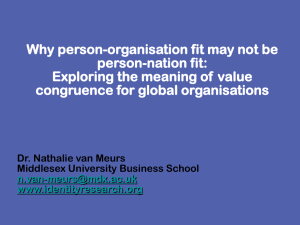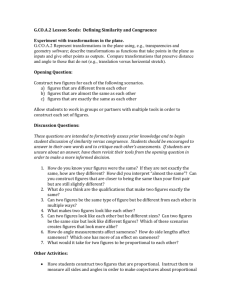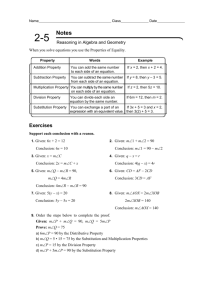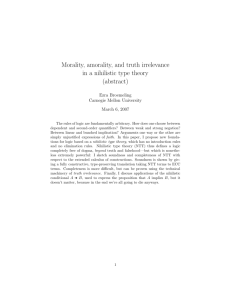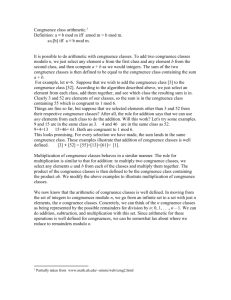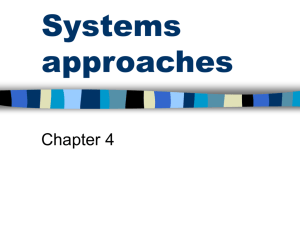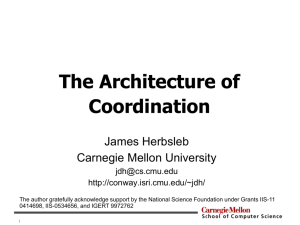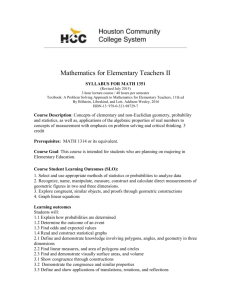2012 Psychiatric–Mental Health Nursing أستاذ زياد طارق Mental
advertisement
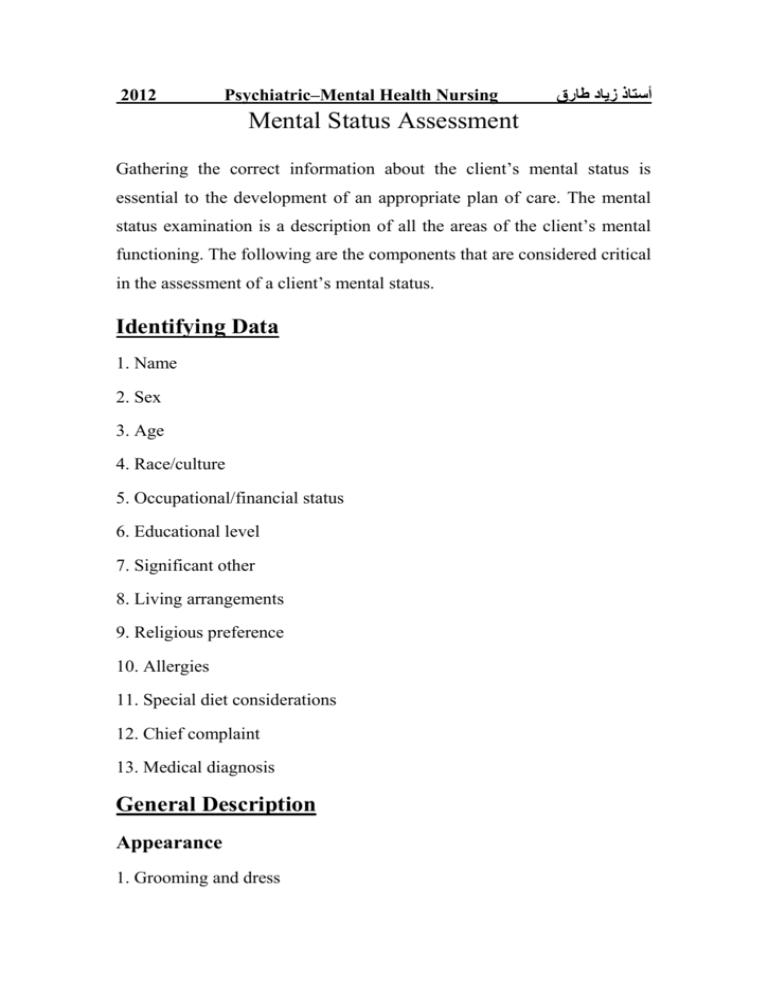
2012 Psychiatric–Mental Health Nursing أستاذ زياد طارق Mental Status Assessment Gathering the correct information about the client’s mental status is essential to the development of an appropriate plan of care. The mental status examination is a description of all the areas of the client’s mental functioning. The following are the components that are considered critical in the assessment of a client’s mental status. Identifying Data 1. Name 2. Sex 3. Age 4. Race/culture 5. Occupational/financial status 6. Educational level 7. Significant other 8. Living arrangements 9. Religious preference 10. Allergies 11. Special diet considerations 12. Chief complaint 13. Medical diagnosis General Description Appearance 1. Grooming and dress 2. Hygiene 3. Posture 4. Height and weight 5. Level of eye contact 6. Hair color and texture 7. Evidence of scars, tattoos, or other distinguishing skin marks 8. Evaluation of client’s appearance compared with chronological age Motor Activity 1.Tremors 2. Tics or other stereotypical movements 3. Mannerisms and gestures 4. Hyperactivity 5. Restlessness or agitation 6. Aggressiveness 7. Rigidity 8. Gait patterns 9. Echopraxia 10. Psychomotor retardation 11. Freedom of movement (range of motion) Speech Patterns 1. Slowness or rapidity of speech 2. Pressure of speech 3. Intonation 4. Volume 5. Stuttering or other speech impairments 6. Aphasia General Attitude 1. Cooperative/uncooperative 2. Friendly/hostile/defensive 3. Uninterested/apathetic 4. Attentive/interested 5. Guarded/suspicious Emotions Mood 1. Sad 2. Depressed 3. Despairing 4. Irritable 5. Anxious 6. Elated 7. Euphoric 8. Fearful 9. Guilty 10. Labile Affect 1.Congruence with mood 2.Constricted or blunted (diminished amount/range and intensity of emotional expression. 3. Flat absence of emotional expression. 4. Appropriate or inappropriate (defines congruence of affect with the situation or with the client’s behavior. Thought Processes Form of Thought 1 .Flight of ideas 2 .Associative looseness 3 .Circumstantiality 4 .Tangentiality 5. Neologisms 6.Concrete thinking 7.Clang associations 8.Word salad 9.Perseveration 10 .Echolalia 11. Mutism 12.Poverty of speech (restriction in the amount of speech) 13. Ability to concentrate 14. Attention span Content of Thought 1 .Delusions a. Persecutory b. Grandiose c. Reference d. Control or influence e. Somatic f. Nihilistic 2 .Suicidal or homicidal ideas 3. Obsessions 4 .Paranoia/suspiciousness 5.Magical thinking 6 Religiosity 7.Phobias 8. Poverty of content (vague, meaningless responses) Perceptual Disturbances 1.Hallucinations a. Auditory b. Visual c. Tactile d. Olfactory e. Gustatory 2 .Illusions 3.Depersonalization (altered perception of the self) 4 .Derealization (altered perception of the environment) Sensorium and Cognitive Ability 1 .Level of alertness/consciousness 2 .Orientation a. Time b. Place c. Person d. Circumstances 3 .Memory a. Recent b. Remote c. Confabulation 4 .Capacity for abstract thought Impulse Control 1 .Ability to control impulses related to the following: a. Aggression b. Hostility c. Fear d. Guilt e. Affection f. Sexual feelings Judgment and Insight 1 .Ability to solve problems 2.Ability to make decisions 3.Knowledge about self a. Awareness of limitations b. Awareness of consequences of actions c. Awareness of illness 4.Adaptive/maladaptive use of coping strategies and ego defense mechanisms
